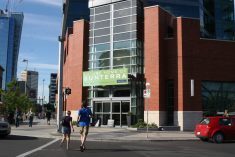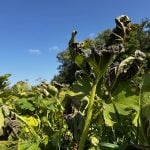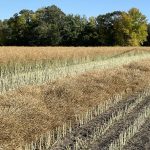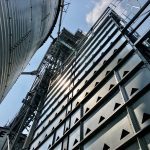In retrospect, Rupert Theuerer has difficulty remembering that it was a
hard sell to convince area investors to buy the former Saskatchewan
Wheat Pool elevator in Briercrest.
“When we started, there were nine directors and we thought sometimes,
‘why are we doing this?’ But now it is kind of obvious,” said the
spokesperson for the 50-plus investors.
They paid $171,000 for the elevator about 30 kilometres southeast of
Moose Jaw, Sask., and the investment looks like it could post a return
Read Also

Trade war may create Canadian economic opportunities
Canada’s current tariff woes could open chances for long-term economic growth and a stronger Canadian economy, consultant says — It’s happened before.
in its first year.
The group took control of the elevator in early March and since then
has loaded more than 80 producer cars.
“Our break-even point is 150 cars per year, so we are actually doing
quite well for the first year,” Theuerer said.
“If we keep this pace up loading producer cars, actually it will be
quite a good return for our shareholders.”
Use of the facility is not limited to investors. Theuerer said the
elevator should be an attractive option to many farmers.
For example, a farmer growing 800 acres of wheat at 30 bushels an acre
would save $4,000 using the facility, he said.
The company’s two employees also clean grain to export standard to
reduce dockage and clean seed grain. Preserving the elevator was also
important for Southern Rails Co-operative, the short line serving the
track southeast from Moose Jaw to Avonlea. It was concerned about the
number of elevators closing on the line.
“That was one of the reasons we wanted to keep it going.
“And Avonlea, just down the track, is in the process of building a
pulse plant. They took over the elevator and are adding on.”
While loading producer cars is the main goal of the group, Theuerer
thinks the facility could capitalize on the movement toward identity
preservation of grain.
“Since we are loading producer cars, the identity is preserved. The
grain that is on the car is the farmer’s grain. So we might have an
edge over larger elevators on that front.
“We have options now. If we didn’t buy, well, the thing would be torn
down and it would cost more to build than what we paid for it.”














